
Notodontidae is a family of moths with approximately 3,800 known species. The family was described by James Francis Stephens in 1829. Moths of this family are found in all parts of the world, but they are most concentrated in tropical areas, especially in the New World.

The buff-tip is a moth of the family Notodontidae. It is found throughout Europe and in Asia to eastern Siberia. The species was first described by Carl Linnaeus in his 1758 10th edition of Systema Naturae.

Noctuoidea is the superfamily of noctuid or "owlet" moths, and has more than 70,000 described species, the largest number of any Lepidopteran superfamily. Its classification has not yet reached a satisfactory or stable state. Since the end of the 20th century, increasing availability of molecular phylogenetic data for this hugely successful radiation has led to several competing proposals for a taxonomic arrangement that correctly represents the relationships between the major lineages.

Hypena is a genus of moths in the family Erebidae. It was first described by Franz von Paula Schrank in 1802. These non-migratory moths overwinter as pupae and almost never estivate as adults.

Nepita is a monotypic moth genus in the subfamily Arctiinae erected by Frederic Moore in 1860. Its only species, Nepita conferta, the footman moth, was first described by Francis Walker in 1854. It is found in India and Sri Lanka.
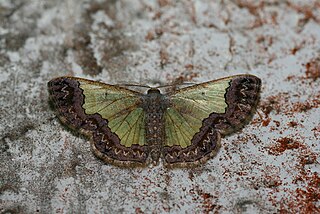
Zamarada is a genus of moths in the family Geometridae, first described by Frederic Moore in 1887. The species type is Zamarada translucida. Over 250 species and 35 subspecies have been listed.
Adisura atkinsoni, the field-bean pod borer, is a moth of the family Noctuidae. The species was first described by Frederic Moore in 1881. It is found in Lesotho, KwaZulu-Natal, Transvaal, Zimbabwe, Mozambique, Zambia, Malawi, Congo, Kenya, Uganda and on Madagascar. It is also present in India, China, Korea, Indonesia (Sumatra), Japan, Sri Lanka, Taiwan, Vietnam and the Himalayan region.
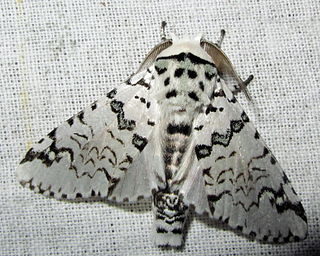
Cerura liturata is a moth of the family Notodontidae described by Francis Walker in 1855. It is found from the Oriental tropics of India, Sri Lanka to Sundaland.

Stauropus alternus, the lobster caterpillar, lobster moth or crab caterpillar, is a moth of the family Notodontidae. It is found in the north-eastern Himalaya, Sri Lanka, Sundaland, the Philippines, Sulawesi and the southern Moluccas. It was described by Francis Walker in 1855.

Harpyia longipennis is a moth in the family Notodontidae. It is found in south-east Asia, including India and Thailand.

Chadisra bipars is a moth of the family Notodontidae. It was described by Francis Walker in 1862 and is found in the Indomalayan realm.
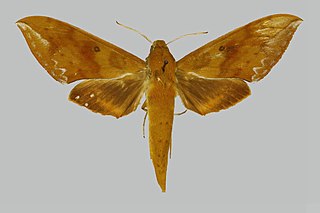
Rhagastis olivacea, the olive mottled hawkmoth, is a moth of the family Sphingidae.

Lophoptera longipennis is a moth of the family Euteliidae first described by Frederic Moore in 1882. It is found in the India's north-eastern Himalayas, Taiwan, Sumatra, Java and Borneo.
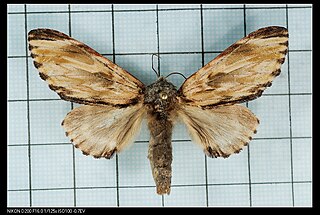
Neopheosia is a monotypic moth genus of the family Notodontidae described by Shōnen Matsumura in 1920. Its only species, Neopheosia fasciata, was first described by Frederic Moore in 1888. It is found in the Himalayas, Taiwan, Sundaland, Buru and Japan.

Risoba is a genus of moths of the family Nolidae erected by Frederic Moore in 1881.

Somera viridifusca, the prominent moth, is a moth of the family Notodontidae described by Francis Walker in 1855. It is found in Sri Lanka, Sundaland, the Philippines, Sulawesi, the north-eastern Himalayas, Sikkim in India, Hainan and Yunnan in China and in Taiwan.
Risoba obstructa is a species of moth of the family Nolidae first described by Frederic Moore in 1881.
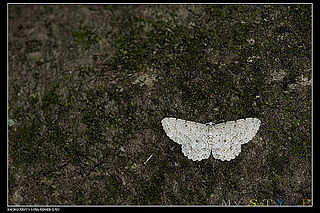
Catoria sublavaria is a moth of the family Geometridae described by Achille Guenée in 1857. It is found in the tropics of India, Sri Lanka, Myanmar, towards New Guinea, to the Bismarck Islands and Taiwan.
















